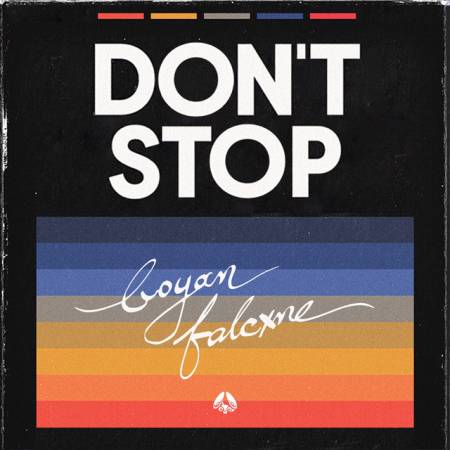Contemporary music pops up in-between the lines of categories by the day. It only takes one human with an idea that can build a community and influence culture, and the emergence of electronic funk is exactly that.
Few styles of music have influenced music in the way that Funk music has. A blues-born style that channeled human feeling to new heights has only expanded in an epic cultural revival.
[ Read More: Future Funk: An Internet-Based Electronic Music Genre ]
To track this cultural revival, we'll walk through some of the influential revivals of Funk music, which have grown cultural pockets throughout the world. This is our top list of contemporary funk-based music genres, which have left an impact on culture -- from breakdance to EDM and beyond. Let's check it out.
List of Electronic Funk Style Variations
1. Electro Funk
Perhaps the most obvious variety to start with. This is one of the most influential revival phases of Funk from the 70s, which expanded the sound in a myriad of ways using new production technology. When you hear that Roland TR-808 cowbell, you are hearing a distinct sound of the 80s Electro Funk era. When you hear a Korg Vocoder, you are also hearing a feature of this sound, which brought music culture to a new tier.
Stay up to date.
New music and exclusive updates in your inbox weekly.
The Electro Funk genre brought the renowned P-Funk sound to a new height, which introduced synths and more to take street culture by storm. This was the fertile ground upon which some forms of hip hop culture, notably on the West Coast of the United States, was formed.
Electro Funk expanded through culture in a limitless fashion with traces of it still very much alive today. For example, in the early 90s, this Electro Funk sound anchored itself inside of West Coast hip hop under the name "G-Funk", which took the rhythmical and synth elements and opened doors for a whole new era. This sound paved way for the success of some of the greatest names in West Coast hip hop, like Snoop Dogg, Warren G, Dr. Dre, Nate Dogg, etc.
Electronic Funk revival continues in our modern times under much more electrified frequencies. Contemporary forms of electro funk and G-Funk found in pockets of today's dance culture with producers infusing hip hop, funk, and electronic music under one umbrella. Through this, you see how one impression on music culture has been siphoned through various music styles.
Today, music is made simply on a laptop with the help of MIDI controllers, hardware synthesizers, software synthesizers, and headphones. Some of the notable names in reviving upbeat electro funk and G-Funk sounds are Colorado duo The Floozies as well as New Zealand electronic music producer K+Lab.
[ Read More: K+Lab's Revival of G-Funk in The Booty Galactic. ]
So, now we see how P-Funk went to E-Funk went to G-Funk and beyond. What other letters of the alphabet deserve a spot before the almighty word "FUNK"? While you give that a thought, have a listen to this electro funk playlist on spotify:
2. NuFunk & Nu-Disco
We'll go ahead and say it now: without Daft Punk, this style would not be in the form it is today. The most notable attributes of NuFunk/Nu-Disco is the four-to-the-floor beat, which was the keystone feature of disco music.
Somehow, French music culture made a large imprint on the revival of Funk and Disco with their movement toward a sound known as "French Touch". Not only did Daft Punk, in their anonymous glory, define the trajectory of disco, funk, and house music, but so did French artists like Justice and many artists on Ed Banger Records in the early 2000s.
We're mainly featuring french artists in this section of the article because French music culture has done so much in the name of keeping Disco and Funk alive. Some of the more contemporary spin-offs of Nu-Disco can be simply coined as "French House", which keeps it euphoric, bouncy, and more downtempo than normal house music. One collective/label in this arena is Roche Musique out of Paris, France, who've supported the growth of French House from artists like Darius to French Kiwi Juice and more.
Here's an elaborate playlist of NuFunk and NuDisco that we found on Spotify, which will give you all the tastes of NuFunk & NuDisco:
3. Glitch Hop & Funk AKA 'Glitch Funk'
This rather niche, however intensely dance-able, re-interpretations of Funk music comes from many non-US producers. Countries like Canada, New Zealand, The Netherlands, Australia, and The UK seem to have a bug when it comes to crazy sound designs. Mix that in with an undeniably deep pock of funky influence, and you have a recipe for a huge party.
The origins of this genre are traced to the glitch hop movement, which came out of England in the early-mid 2000s. After the first wave of American dubstep and the subsequent movement of dance culture from the underground to the mainstream, a wonderland of genres popped up.
One of the more notable artists of funky, glitchy sounds include the renowned Bristol, UK duo known as Koan Sound. They took dance music by storm with their 2011 EP Funk Blaster followed by their 2012 Adventures of Mr. Fox, which include titles like "Funkblaster" and "Sly Fox" -- two titles worth mentioning.
Another notable name in the realm of glitch hop with funk influence is New Zealand producer Opiuo, whose 2010 release Slurp and Giggle brought a style of high-energy synthesized bass lines. Outside of these two notable influences in the Glitch Funk realm, there's still an underground scene of sounds, which came to the forefront via now-defunct Adapted Records compilation Glitch 'n' Funk series.
4. Ghetto Funk
This is less a style, as it is a brand and a movement, which originated out of the Southwestern UK around 2010. A few factors play into the creation of the Ghetto Funk culture, which pretty much originated solely in the UK with a pollination in Western Canada.
On one hand, this culture started because DJs and producers wanted to flip classic tunes into dancefloor smashers. All of this during a time where while turntablism was burgeoning in the UK, the ghetto funk movement brought artists like A.Skillz, Krafty Kuts, and Featurecast to the forefront of the movement.
The music culture already quite invested in many of their country's proprietary sounds, Ghetto Funk remains versatile in its nature. Many of the world's biggest dance music styles originated in the UK, like drum n' bass, jungle, UK breaks, UK Garage, etc., which find themselves into the Ghetto Funk sound. However, the base of the sound seems to exists largely in UK breaks, midtempo breaks, and glitch hop.
The defining features of this style seem to exist largely in a specific swing-time wobble that you find in Featurecast's tune "Sniper".
Another face of the Ghetto Funk sound is very much in-line with glitch hop, which we discovered through artists like Bristol producer WBBL. This track stacks together multiple samples from the funk and disco era as well as hip hop and then throws it into a heavy breakdown of glitch. This is also a notable style with the Ghetto Funk arena. While this genre is now ten years old, it is a tightly-knit community of producers, DJs, turntablists, labels, and fans.
Explore More Funk Influenced Tunes
Now that we've taken a walk through a section of the Funk Forest, let us have a seat and learn about the implications of what The Funk has brought contemporary styles of music.
Learn more about all of these genres, whether Ghetto Funk, Glitch Funk, Electro Funk, Electro Soul or Nufunk, you'll find it in our "Funky Flavors" playlist:







